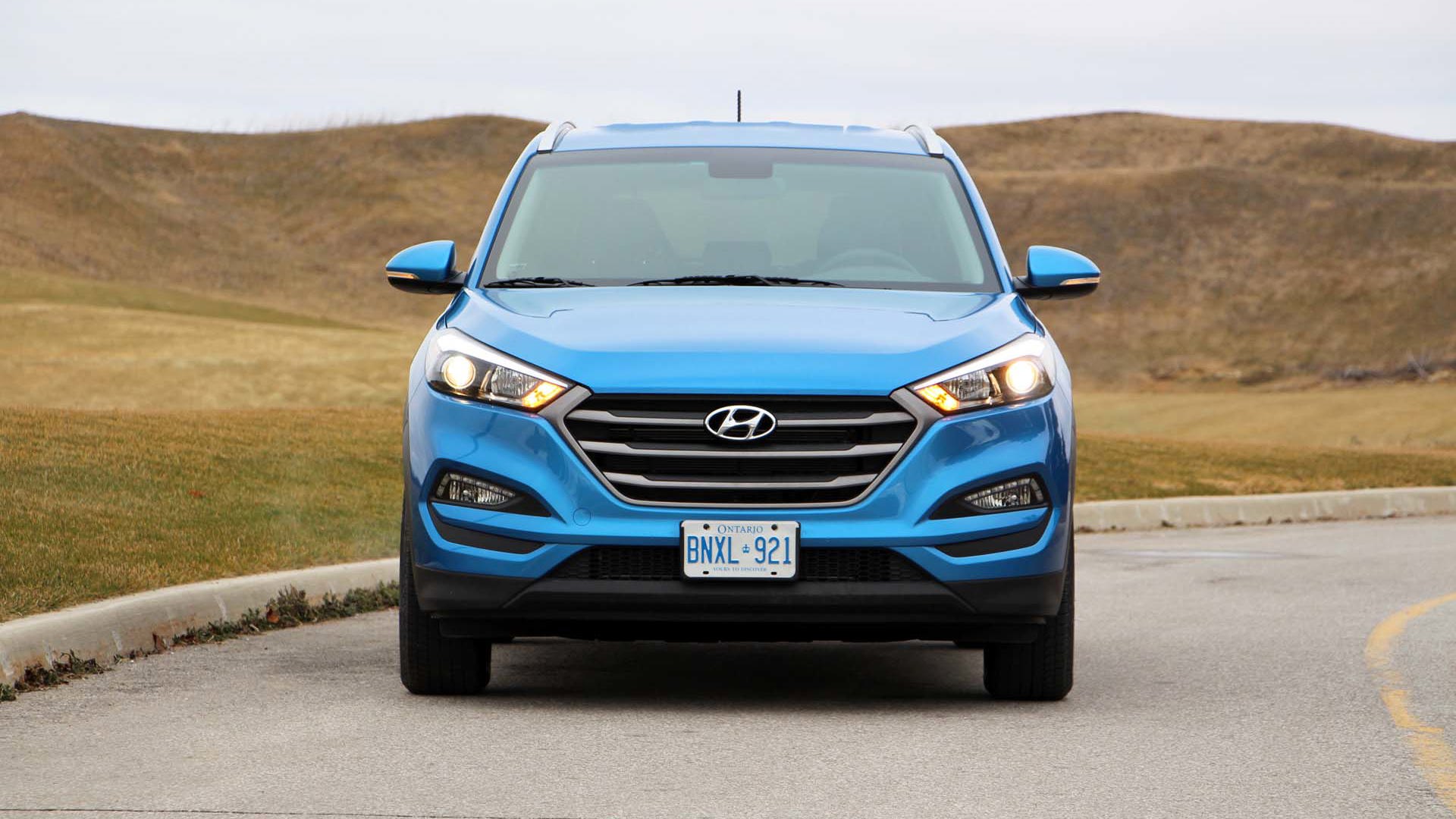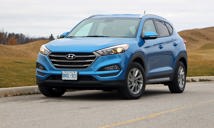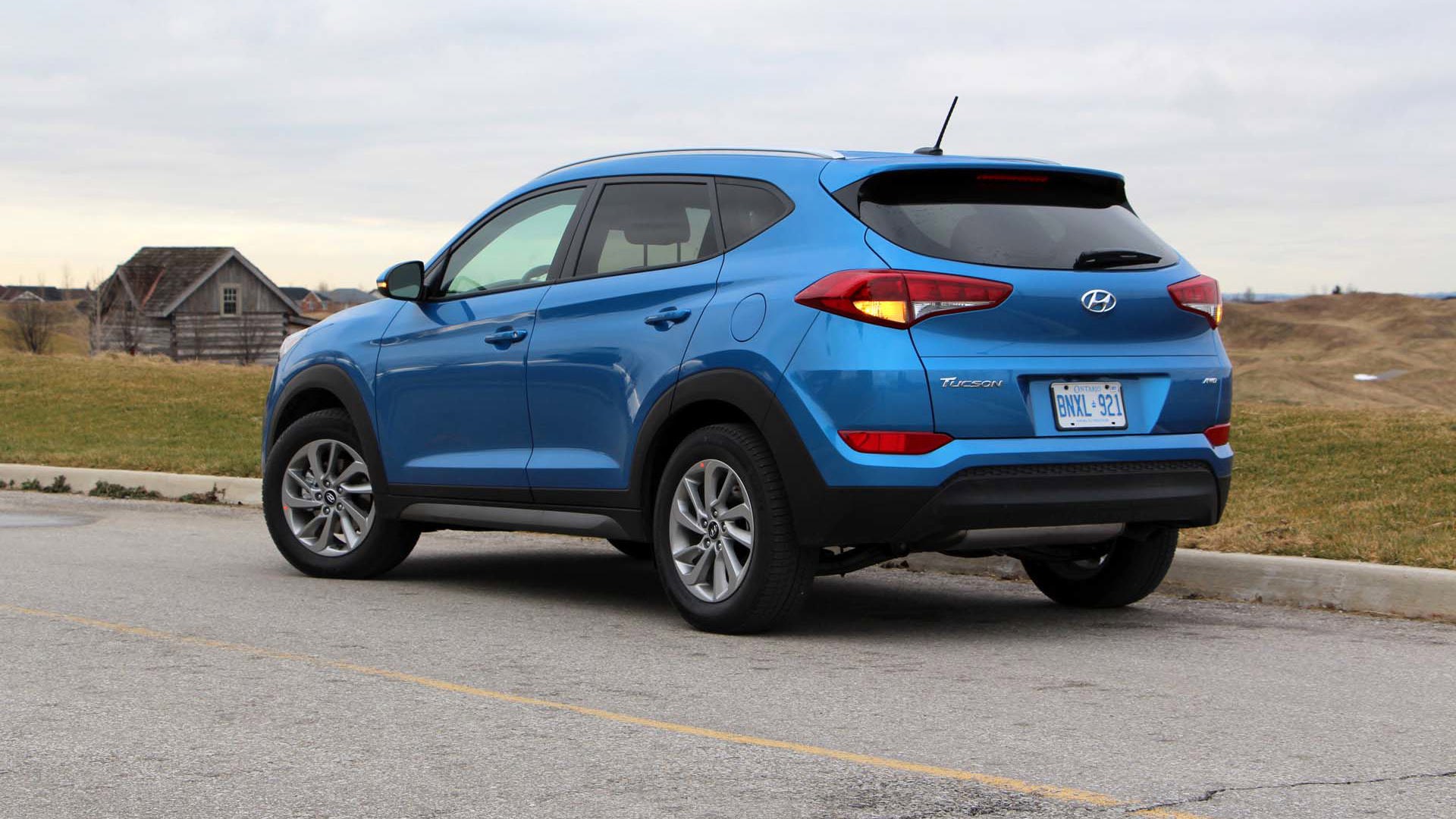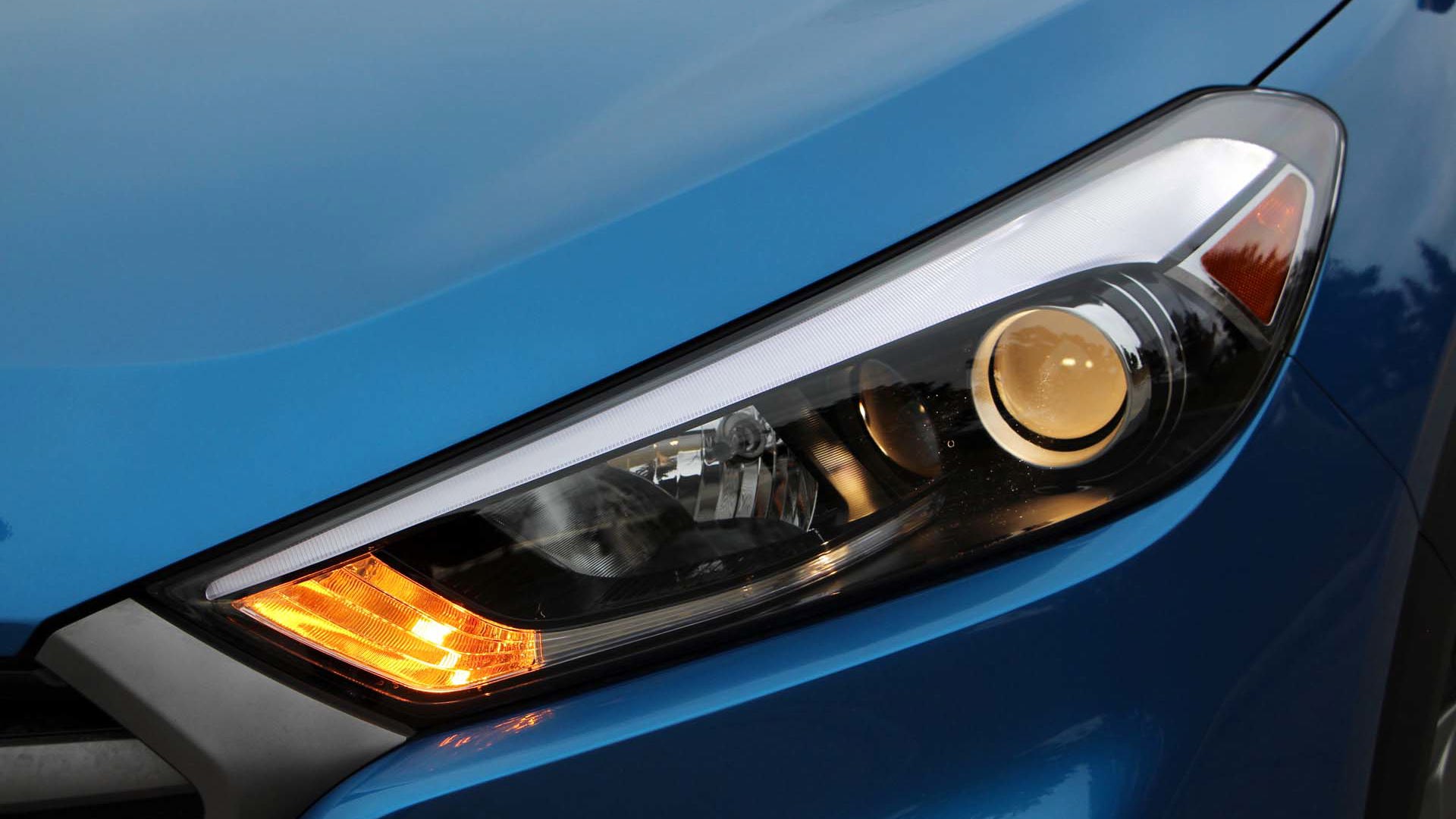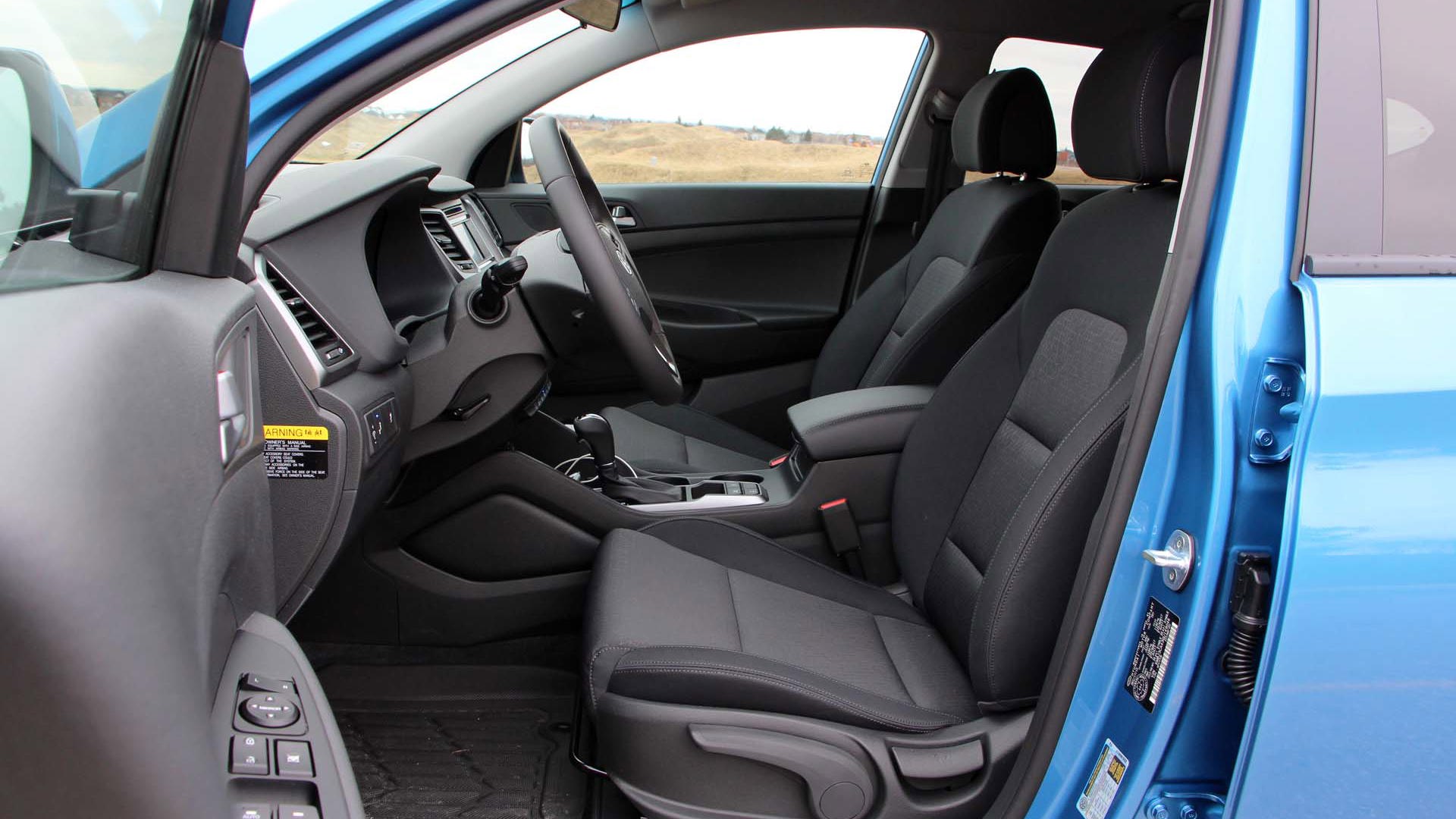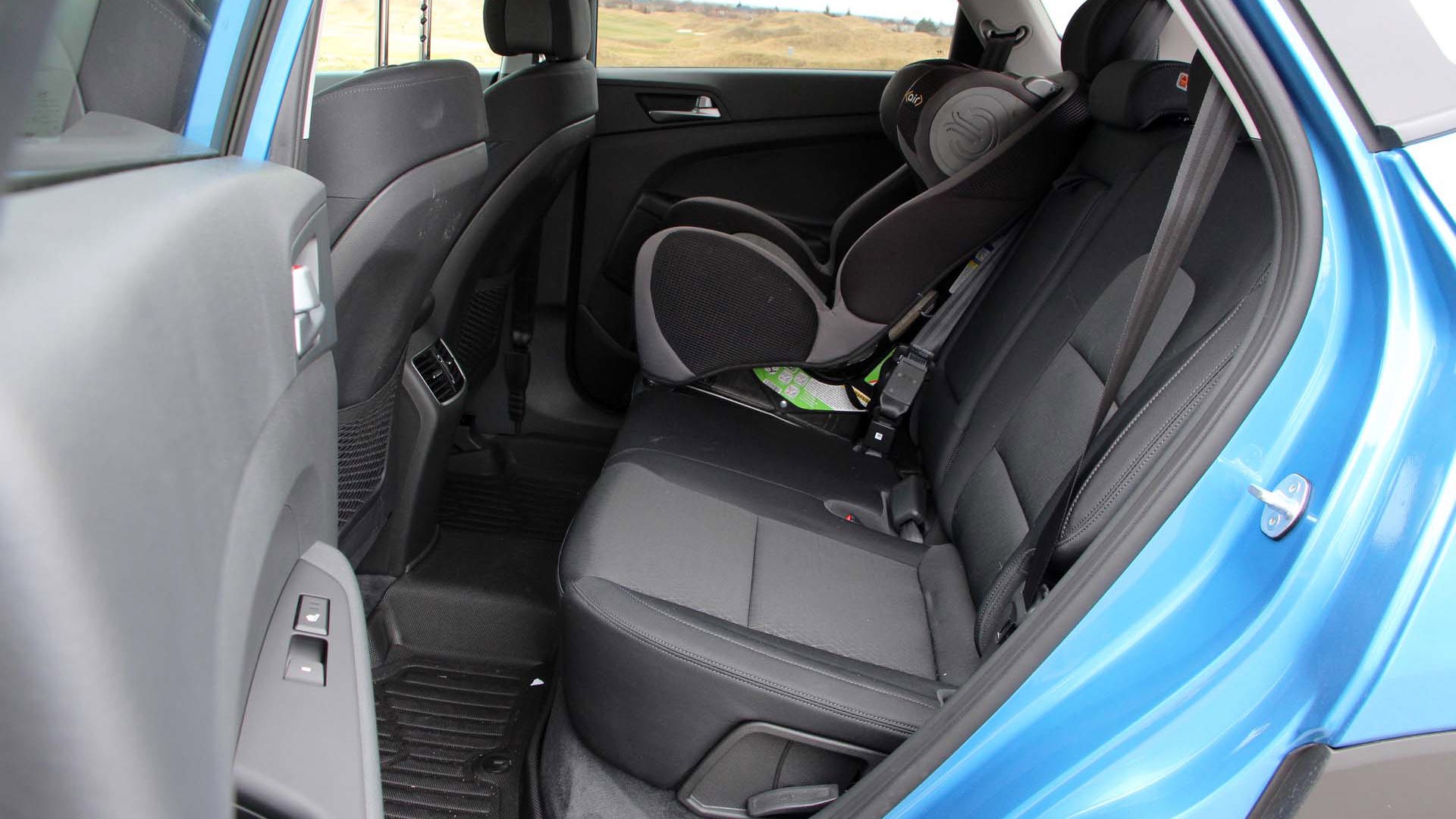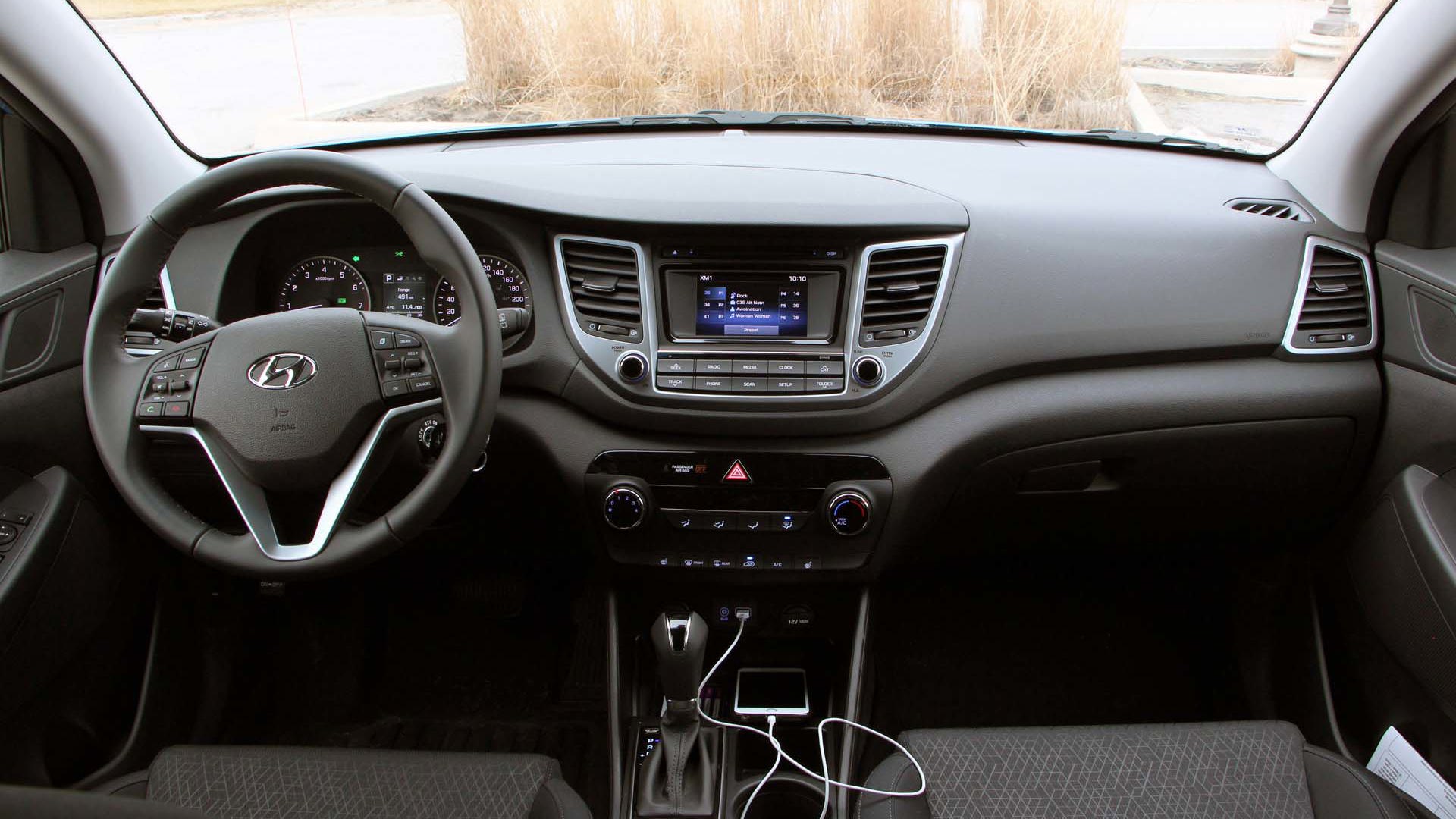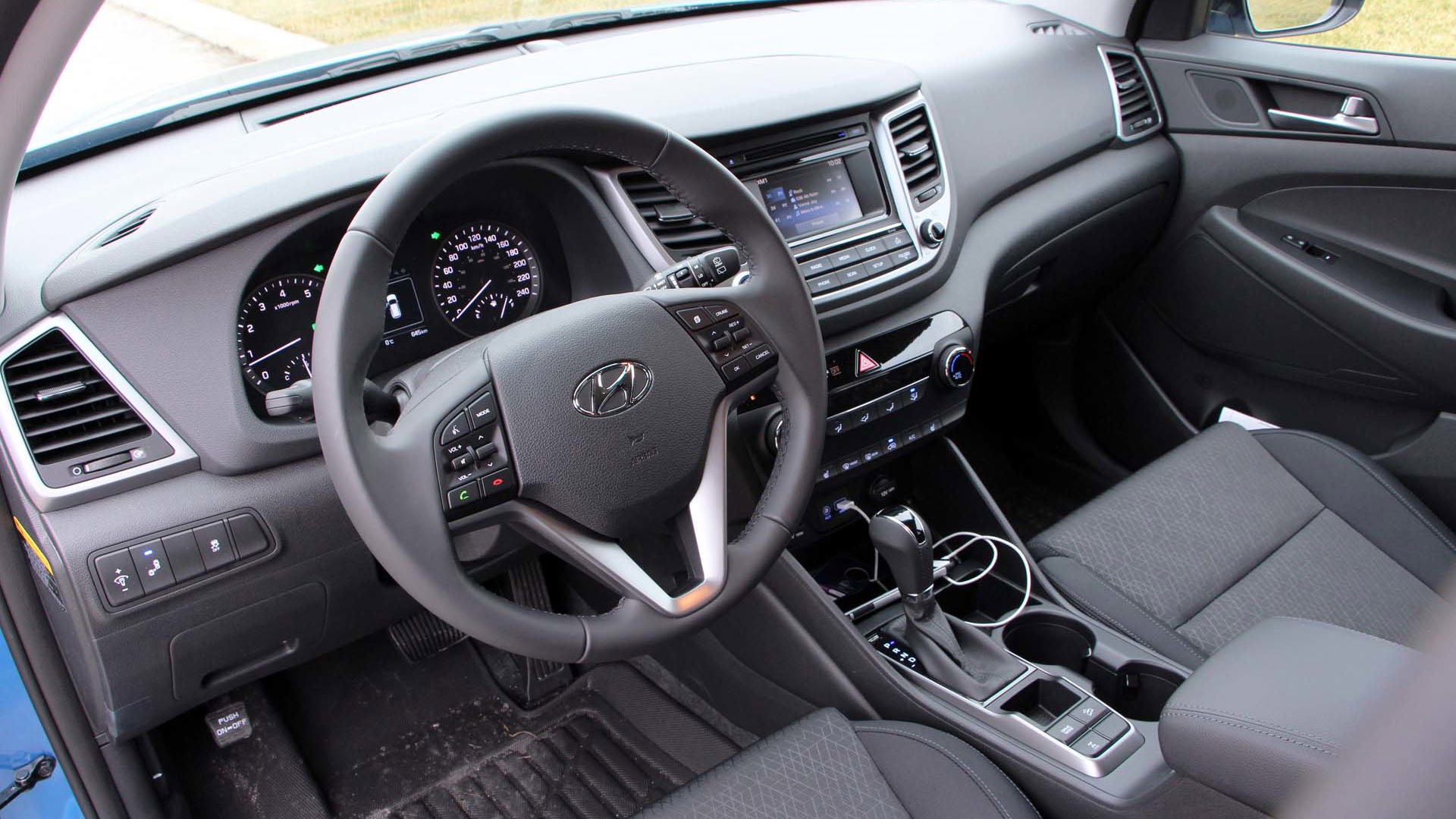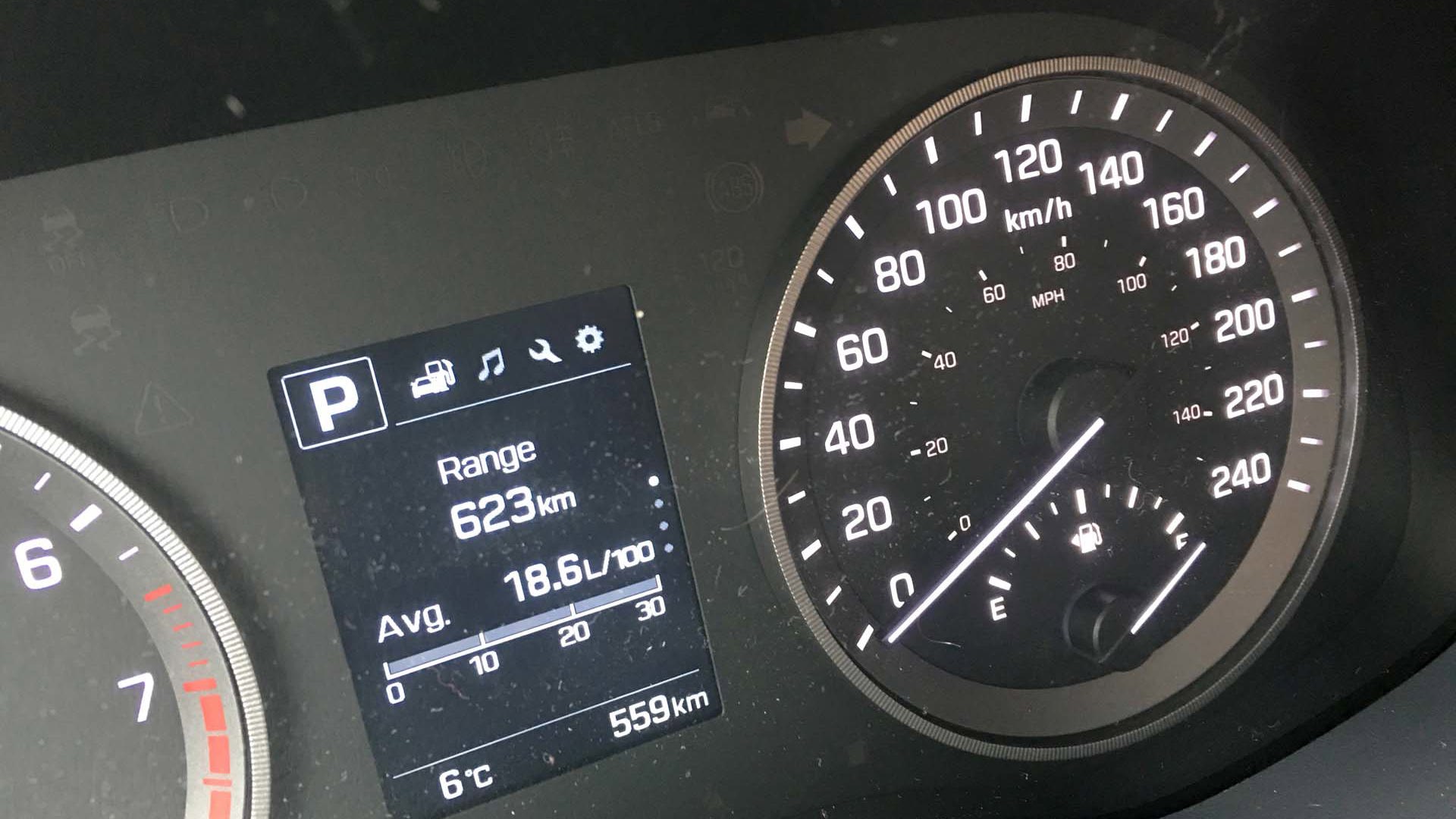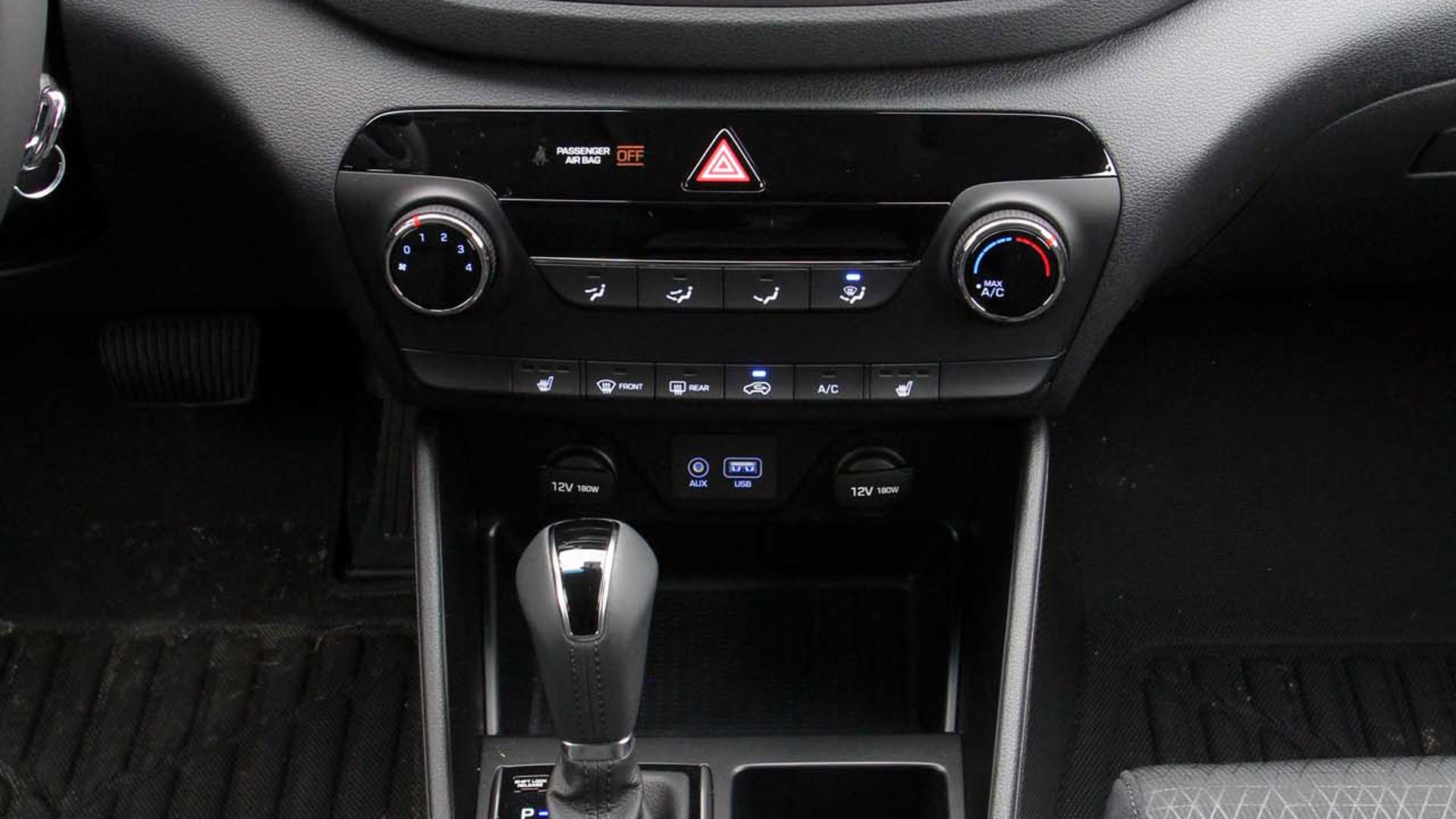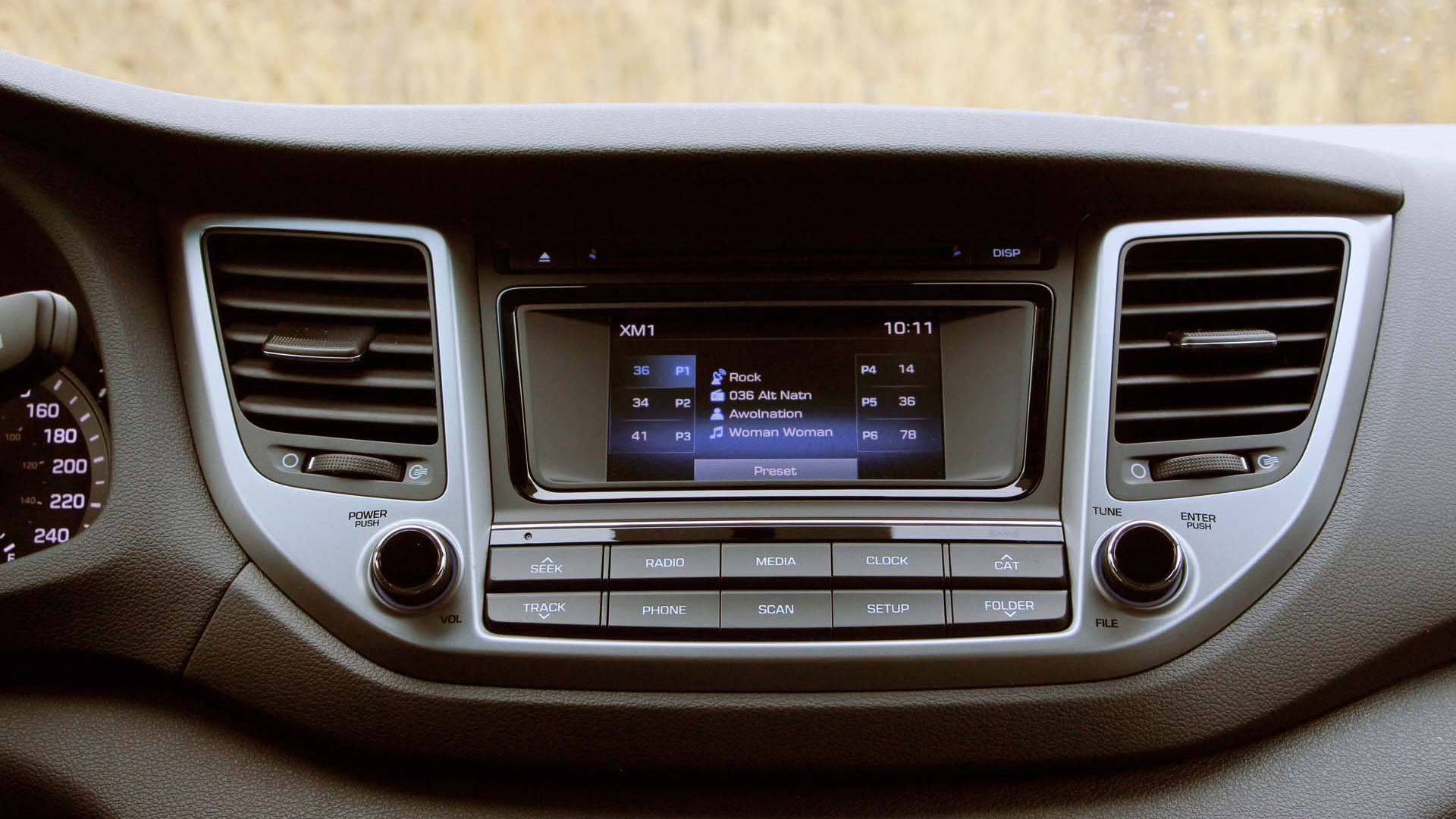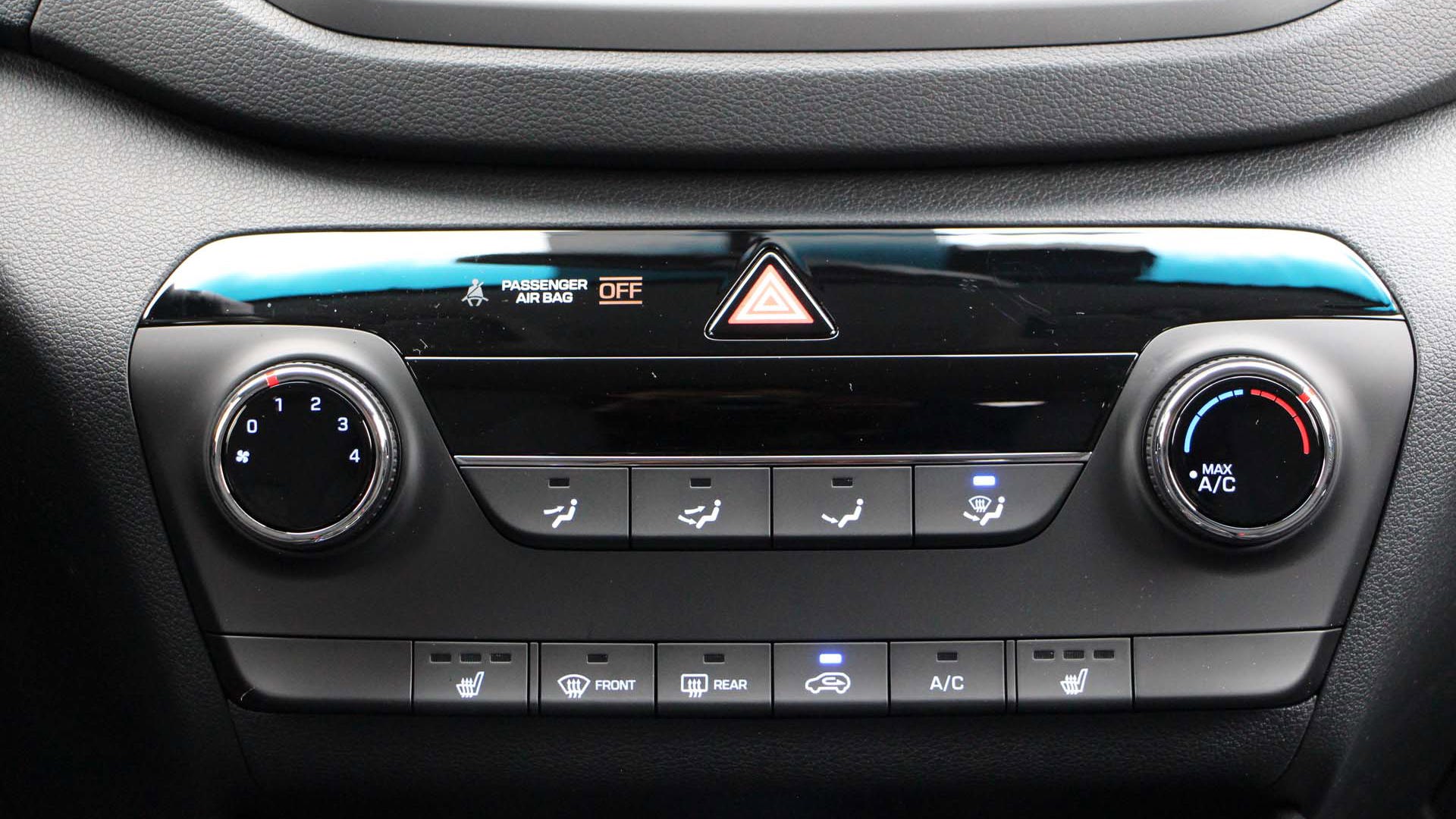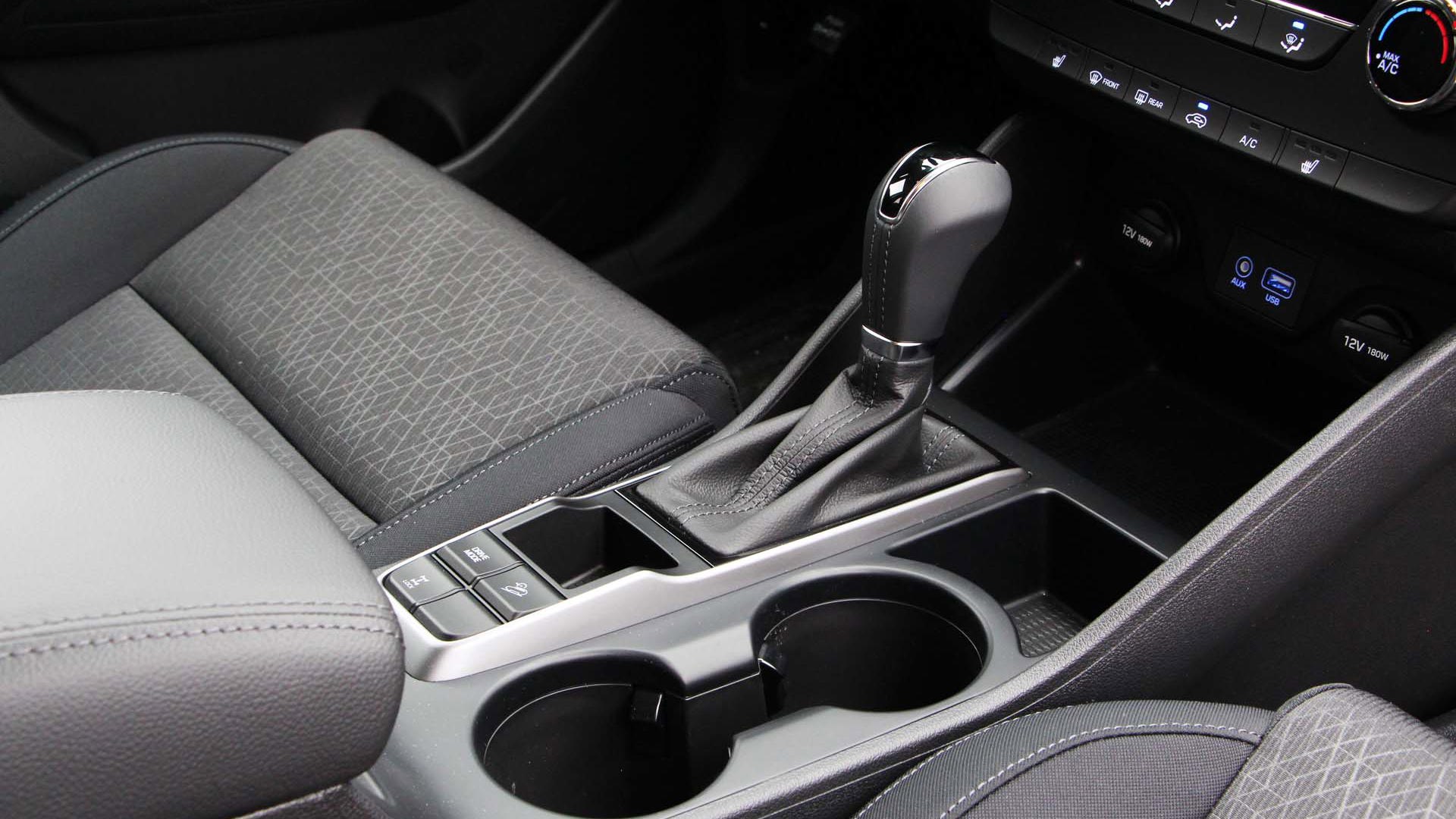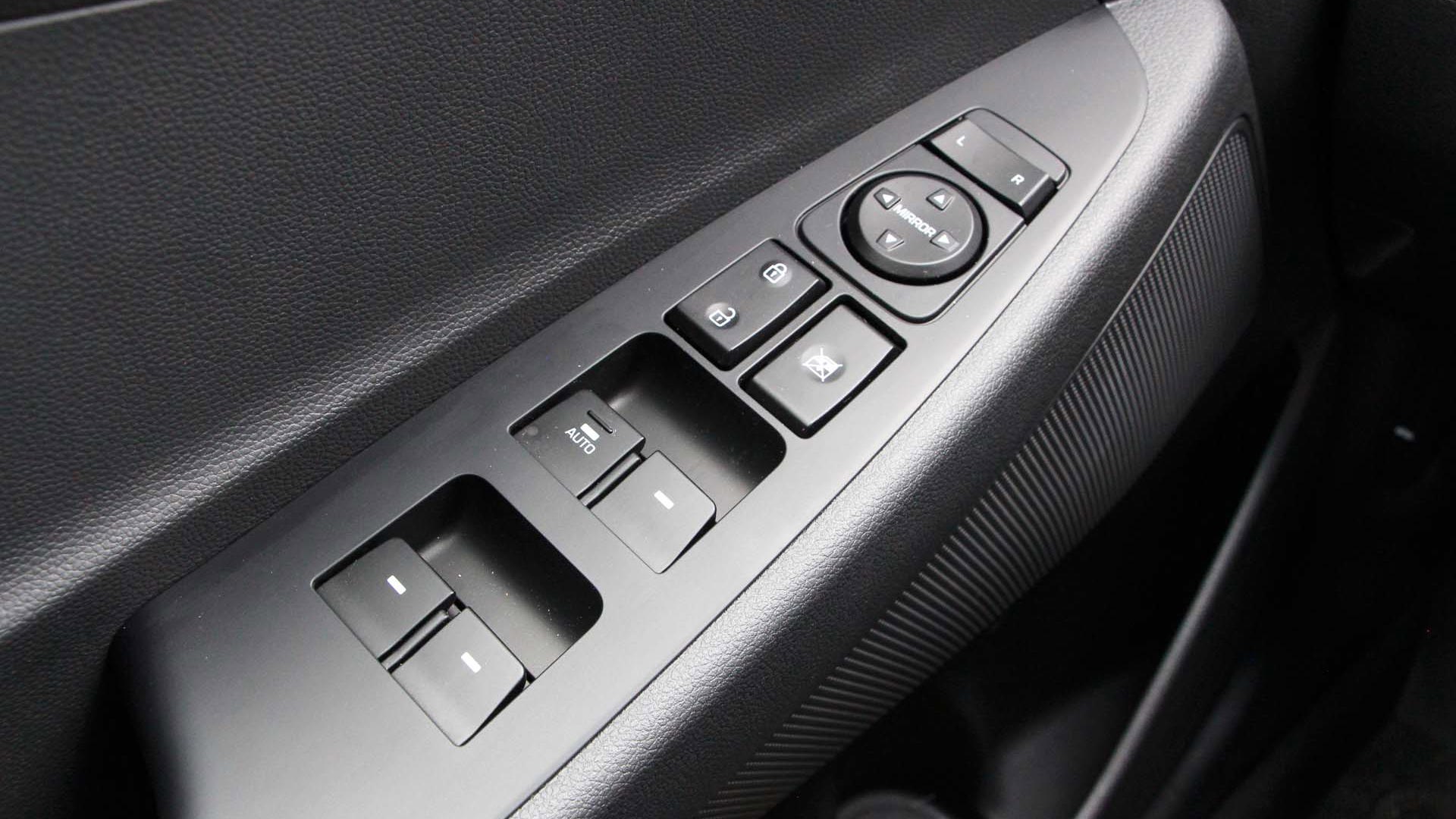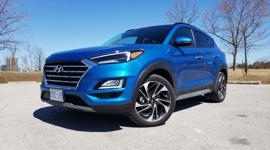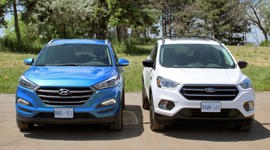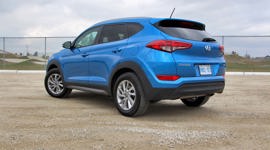Nothing broke. That’s always a good start to a long-term test, and the Tucson is a model of simple practicality that promises ease of use and sturdy functionality. With a trim as modest as the Premium AWD, many of the electronic systems and interfaces that have been called out in JD Power’s recent Dependability Survey would not be a factor.
In our week with the higher-spec Limited 1.6T, there was far more technology to play with that could challenge those that prefer simple controls, though it still retained Jacob’s favourite knobs (volume and tuning).
As a brand, Hyundai continues to rank below average, its 2013 models that were scored for this year’s study listed as having 158 Problem per 100 Vehicles (PP100), compared to industry average of 152 and leading brands (Lexus and Porsche) that score under 100. Although their overall brand ranking isn’t great, both the Accent and Sonata were top 3 in their respective segments, and 158 is a hugle leap better than the 188 PP100 Hyundai scored in the 2015 study (rating 2012 models) so these are some positive indicators for the brand.
In our tester, the touchscreen interface with traditional volume and tuning knob has been flawless. Sure, the screen is somewhat tiny, making the in-screen buttons a bit difficult to jab on the move when wearing gloves, which is necessary since this trim does not include higher trims’ heated steering wheel. Ate least the screen responds well no matter what gloves are worn, unlike the Kia Sorento’s screen, which is at times unresponsive to gloved hands.
In our week with the higher-spec Limited 1.6T, there was far more technology to play with that could challenge those that prefer simple controls, though it still retained Jacob’s favourite knobs (volume and tuning). Aside from the larger screen real estate, we miss the Limited’s navigation system (I just like having the maps on screen…) and auto climate control. Do I miss them enough to fork over an extra five to eight grand for the Luxury or Limited trim? Not even close.
With features like the split-folding rear seats, heated front and rear seats, cargo cover, roof rails and blind-spot warning, there is nothing that feels, well, missing. On top of my basic needs, I have some reservations about the powertrain upgrade.
First impressions: Long-Term Test Arrival: 2016 Hyundai Tucson
The 2.0L four-cylinder is a simple yet modern powertrain, with direct injection and Dual Continuously Variable Valve Timing (D-CVVT) powering it to 164 @ 6,200 rpm and 151 lb-ft @ 4,000 rpm, modest numbers these days when even the Honda CR-V and Mazda CX-5 pump out in excess of 180 hp and 180 lb-ft, while the Toyota RAV4 and Nissan Rogue manage 170 or more in both measures. Before we get into power delivery and driving characteristics, a note about fuel consumption. The 2.0 is not your efficiency option; at 11.0 L/100 km in the city and 9.0 on the highway in AWD trim, it trails more spacious and more powerful competitors mentioned above, by as much as 1.5 L/100 km in some cases. After a couple tanks of mixed winter driving, we are tracking at about 9.7 L/100 km, but we’ll see which way that goes long term.
For better power and efficiency, the 1.6L turbo, also with D-CVVT and direct injection, trims consumption to 9.9 L/100 km in the city and 8.4 on the highway, at least in the same neighbourhood as the competition. It also produces an extra 11 hp (175 @ 5,500 rpm) and bumps up torque by a generous 44 (195 @ 1,500-4,500 rpm), topping it all off with a new state-of-the-art seven-speed dual-clutch transmission. Sadly, that transmission, modern and exciting as it might sound on paper, is a letdown and robs that torque engine of much of its charm. Throttle tip-in is delayed and gear engagement is slow off the line and lurches between some shifts, and generally nullifying that broad band of torque. Jacob concurred: “The 1.6T had some funky transmission stuff going on, it was hanging in gear, and it felt snatchy between gears.”
In contrast, the 2.0 is raspy yet ultimately smooth, and its conventional six-speed automatic transmission is refined and proven, responding predictably with quick, seamless and early upshifts in eco mode, prompt gear downs in response to big throttle stomps and higher-rpm upshift threshold in the Tucson’s Sport Drive Mode.
| Warranty: 5 years/100,000 km; 5 years/100,000 km powertrain; 5 years/unlimited distance corrosion perforation; 5 years/unlimited distance roadside assistance Competitors: |
When throttle is not mashed and progress is appropriately moderate, it’s a quiet drivetrain and overall ride, wind and road noise subdued despite aggressive Michelin X-Ice winter tires, although the suspension can occasionally sound a bit clunky coping with choppy winter roads and rough transitions. Also impressive considering the soft winter rubber is the decent steering. Past Hyundais have been disappointing no matter which of the weight settings the steering was set to, but now it adjusts in lockstep with the overall drive mode, and generally feels less flimsy and vague. Not quite as well tuned as the Kia Sorento we’ve been enjoying as well this winter, but nonetheless acceptable for a small SUV.
The ride is likewise well judged and well damped, comfortable above all else, but stable in everyday cornering and even with a touch more gusto. And with our recent blessing of white powder, some essential, um, ‘product testing’ revealed that its AWD was also quite capable of delivering confident, controlled recovery even in extreme winter conditions. In fact, the Tucson can be downright fun.
Pricing: 2016 Hyundai Tucson
Base Price (Base FWD): $24,399
Base Price (Premium AWD): $28,999
Options: None
Destination: $1,795
A/C Tax: $100
Price as Tested: $30,894
